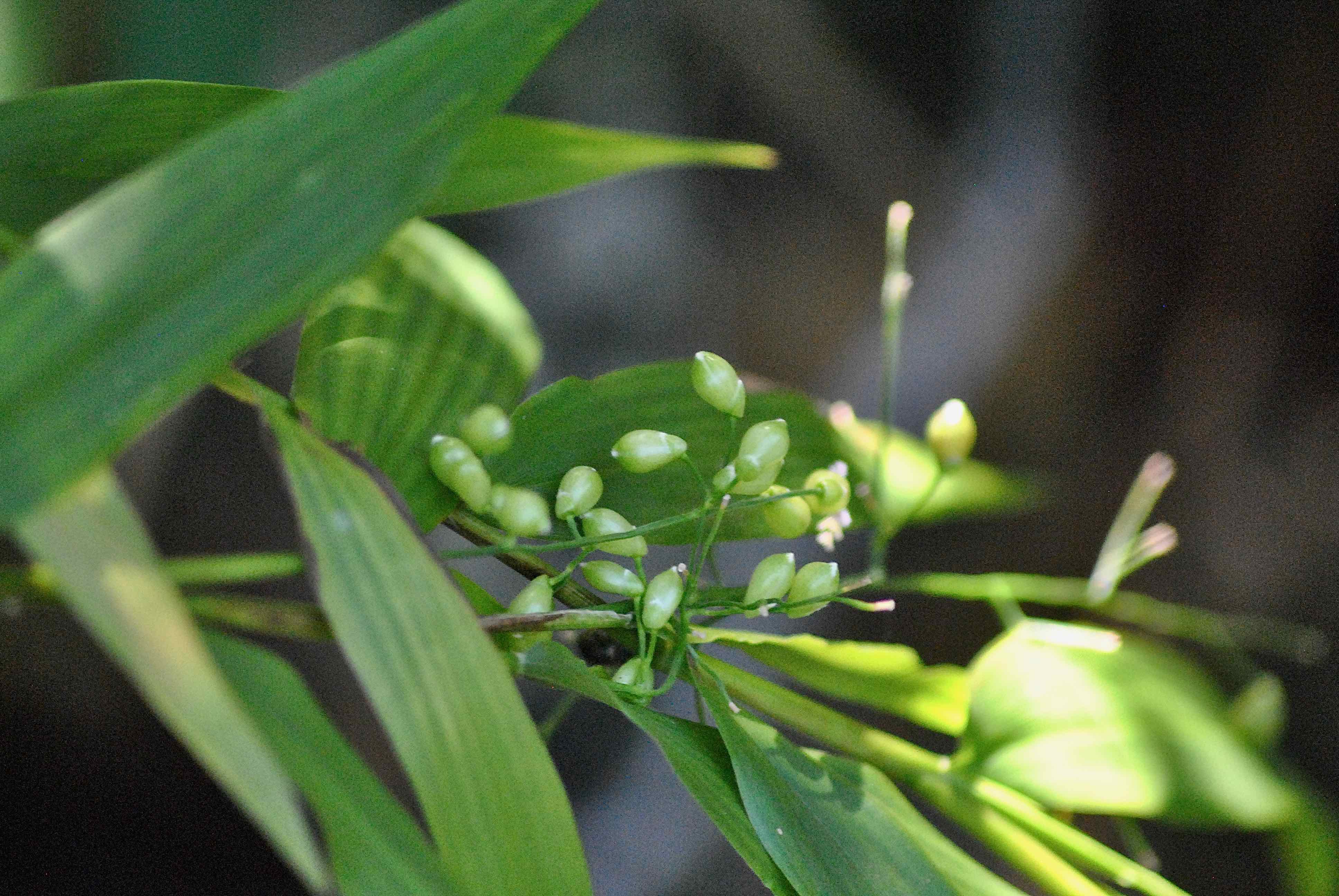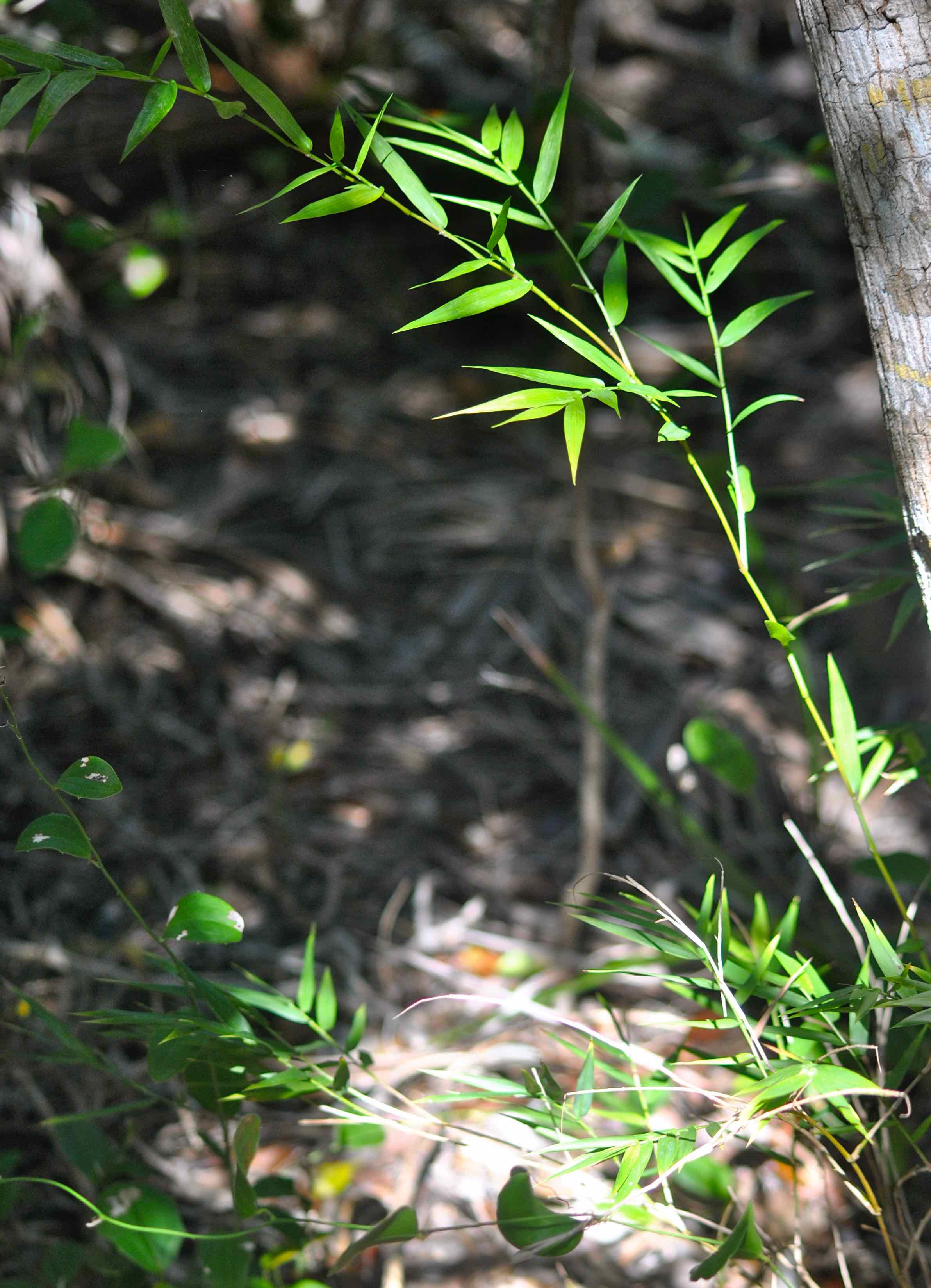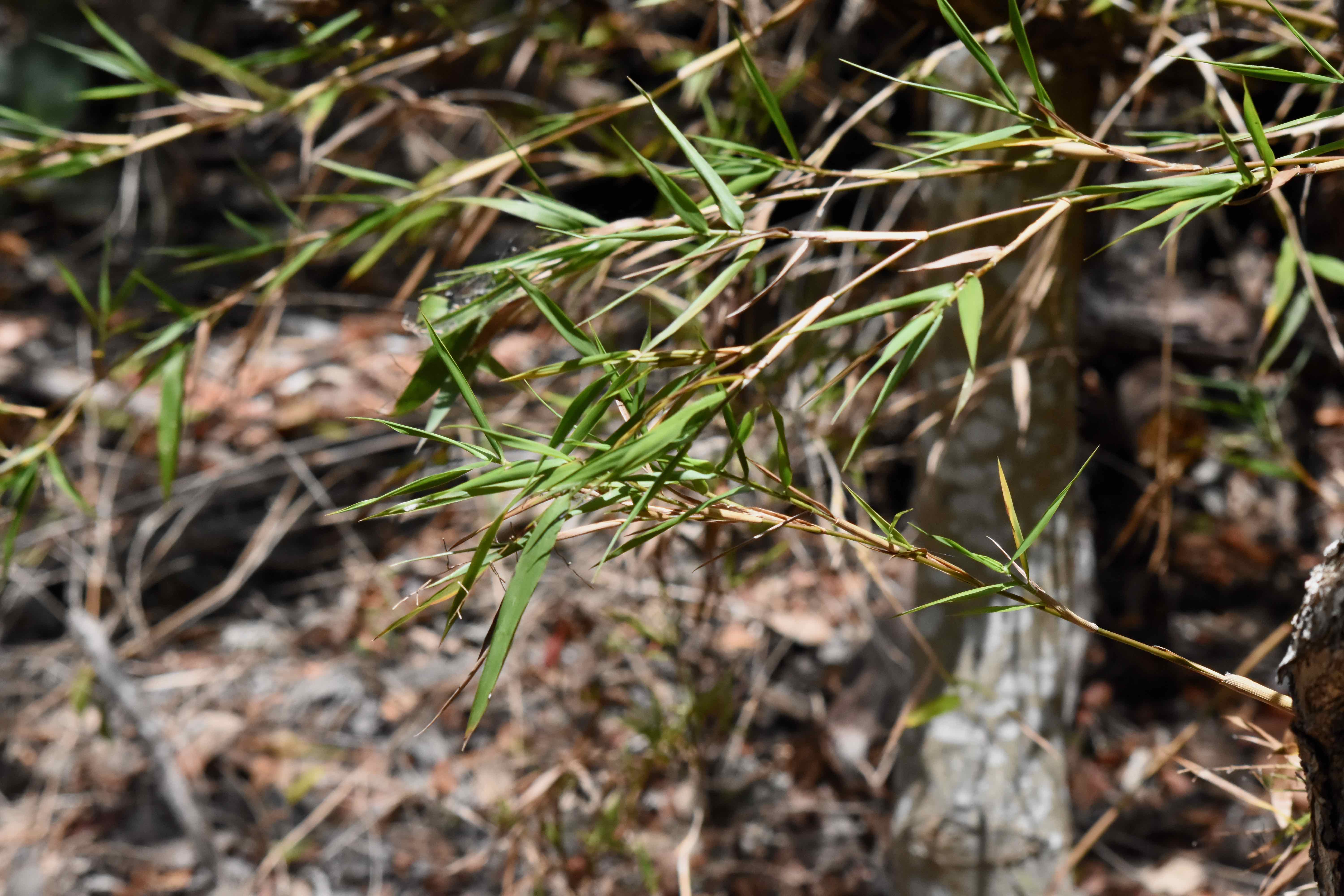
Wild bamboo, photographed at Key West Tropical Forest and Botanical Gardens, Stock Island, Key West, Monroe County, in April 2017.
If you're thinking of a tall, graceful, tree-like grass that makes soothing sounds as the wind rustles through its branches, it's not this guy. Wild bamboo, Lasiacis divaricata, is short and somewhat spindly, almost vine-like. It's more of a tripping hazard than anything.
Wild bamboo grows to about three to six feet in length, generally speaking, but it can reach 12 to 16 feet if it can find something to support it. The stems, or culms as they're called, are spindly and lack the strength to keep the plant erect like most bamboos. Instead, the plant tends to arch over, clambering vine-like onto its neighbors in the understory of hammocks. The culms do have considerable tensile strength, however, making them a bit of an obstacle for anyone attempting to walk through them.
Florida is the only state in the union where wild bamboo is native. But it's found throughout the Caribbean, including the Bahamas, Mexico, Central America and South America as far south as Brazil. It's rarely found north of the Miami River, according to the Institute for Regional Conservation, but its natural range extends up the coast as far north as Brevard County. It's extirpated, or locally extinct, within Palm Beach County, and might have never grown in Broward County, according to the IRC.
Its wide natural range and occurance in so many parks and preserves — 36 in Florida alone — rates it a least concern by the International Union for Conservation of Nature, meaning it's in no danger of going extinct any time soon. Wild bamboo is especially common in the tropical hammocks of the Florida Keys. It also grows in mangrove forests, open woodlands and savannas. It prefers well-drained soils with some organic content. It prefers sites with some shade.
Wild bamboo isn't known to grow naturally anywhere outside of its native range, and unlike some of its bamboo cousins, it rarely forms dense thickets.
It does grow rapidly, reaching most of its eventual length in its first year. The second year and third year, it adds branches; after that, it replaces old culms, or stems. It is a perennial.
Wild bamboo leaves are are alternate and lance shaped, long and narrow. It develops an extensive and fibrous root system. It flowers mostly summer to fall, but the blooms are a less-than-spectacular yellowish green. The flowers are also wind-pollinated.
This is not a plant with a lot of human uses. It is used in landscaping for restorations and natural scenes, and cattle and horses will browse on the tender leaves. Wild bamboo also provides some cover and food for wildlife, including birds. In fact, birds are considered a major disperser of its seeds.
Lasiacis, by the way, means woolly point, referring to hair-like tufts found on the end of its spikelets. Divaricata refers to the way the branches are spread apart. The genus Lasiacis has 16 members of which only one other is found in Florida, a non-native plant called climbing tibisee, L. ruscifolia.
Other common names and spellings include wild-bamboo, smallcane, small cane, wild cane, cane grass, Florida tibisee and Harris' tibisee. Wild bamboo is a member of Poaceae, a family of grasses.
Click on photo for larger image
U.S. Department of Agriculture Distribution Maps
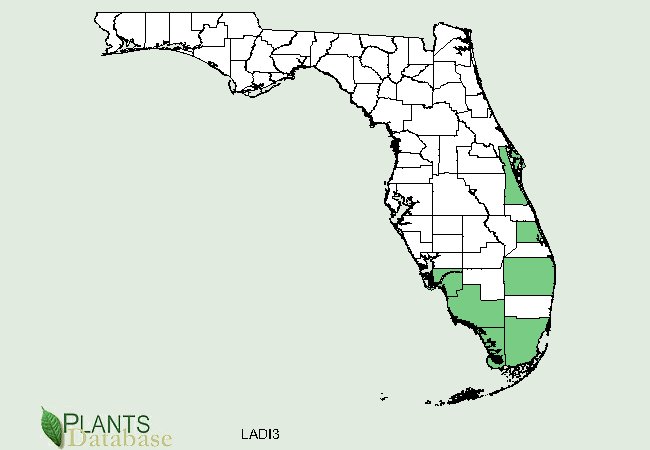

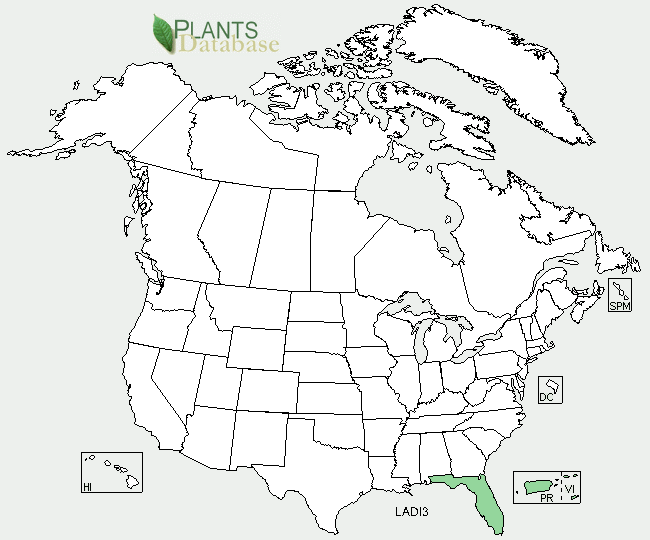
Links for Wild Bamboo

